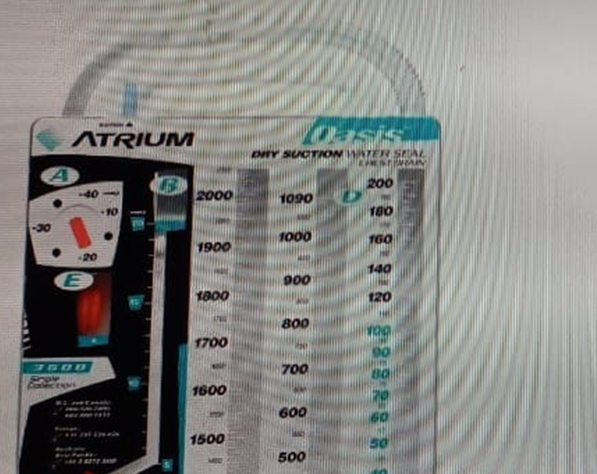A nurse is caring for a client who has a closed chest tube system. Which of the following actions should the nurse take after noticing a rise in the water seal chamber with client inspiration? Utilize image to see area that is being described.

Immediately notify the provider
Clamp the chest tube near the water seal
Continue to monitor the client
Reposition the client toward the left side
The Correct Answer is C
A. Immediately notify the provider . A rise in the water seal chamber with inspiration (tidaling) is a normal finding, indicating proper function of the chest drainage system. There is no need for immediate provider notification.
B. Clamp the chest tube near the water seal . Clamping the chest tube can lead to a tension pneumothorax by trapping air inside the pleural space. This action is only done temporarily for specific indications, such as assessing for an air leak or changing the drainage system.
C. Continue to monitor the client . Tidaling (fluctuation of water with inspiration and expiration) is expected in the water seal chamber. The nurse should continue to monitor for any sudden cessation of tidaling (which may indicate obstruction) or continuous bubbling (which may indicate an air leak).
D. Reposition the client toward the left side . Position changes do not affect normal tidaling in a functioning chest tube system. However, frequent repositioning is encouraged to promote lung expansion.
Nursing Test Bank
Naxlex Comprehensive Predictor Exams
Related Questions
Correct Answer is C
Explanation
A. Deep vein thrombosis is not a known risk factor for obstructive sleep apnea. Sleep apnea is primarily related to airway obstruction rather than circulatory issues.
B. Being female is incorrect. Obstructive sleep apnea is more common in males than females, although postmenopausal women have an increased risk.
C. Obesity is correct. Excess weight, particularly around the neck, increases the risk of airway obstruction during sleep, making obesity a major risk factor for obstructive sleep apnea.
D. Atherosclerosis is not a direct risk factor. However, untreated obstructive sleep apnea can contribute to cardiovascular issues, including hypertension and atherosclerosis.
Correct Answer is A
Explanation
A. Holding the breath for 10 seconds after inhaling allows the medication to be absorbed into the lungs effectively.
B. The client should wait at least 1 minute between inhalations if a second dose is needed, not 10 minutes.
C. The client should take a slow, deep breath while releasing the medication to ensure better lung deposition.
D. The client should inhale while pressing the inhaler, not exhale, to properly receive the medication.
Whether you are a student looking to ace your exams or a practicing nurse seeking to enhance your expertise , our nursing education contents will empower you with the confidence and competence to make a difference in the lives of patients and become a respected leader in the healthcare field.
Visit Naxlex, invest in your future and unlock endless possibilities with our unparalleled nursing education contents today
Report Wrong Answer on the Current Question
Do you disagree with the answer? If yes, what is your expected answer? Explain.
Kindly be descriptive with the issue you are facing.
